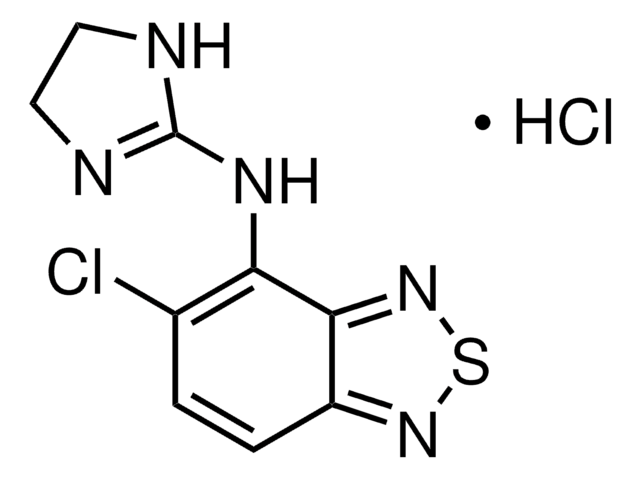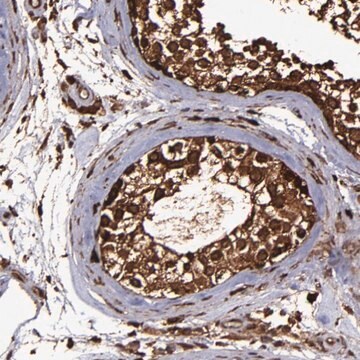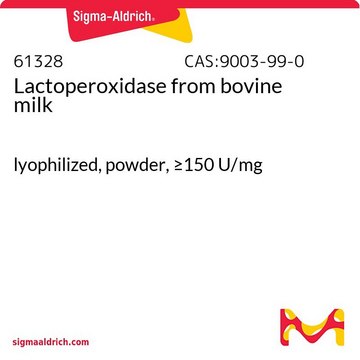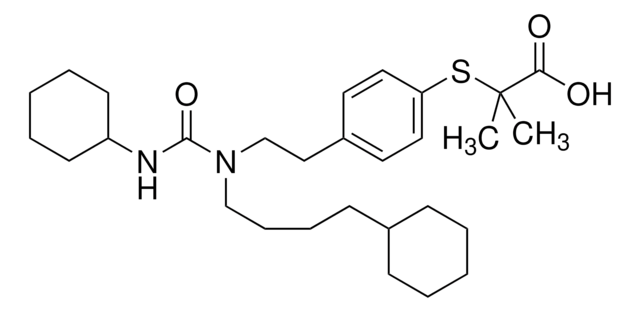Wichtige Dokumente
M1559
Moxonidine hydrochloride
≥98%
Synonym(e):
4-Chloro-6-methoxy-2-methyl-5-(2-imidazolin-2-yl)aminopyrimidine hydrochloride, BDF-5895
About This Item
Empfohlene Produkte
Assay
≥98%
Ersteller
Solvay
SMILES String
Cl.COc1nc(C)nc(Cl)c1NC2=NCCN2
InChI
1S/C9H12ClN5O.ClH/c1-5-13-7(10)6(8(14-5)16-2)15-9-11-3-4-12-9;/h3-4H2,1-2H3,(H2,11,12,15);1H
InChIKey
ZZPAWQYZQVUVHX-UHFFFAOYSA-N
Angaben zum Gen
human ... ADRA2A(150) , ADRA2B(151) , ADRA2C(152) , NISCH(11188)
Anwendung
- as a standard to study its blood-brain barrier (BBB) permeability in porcine brain lipid extract by parallel artificial membrane permeability assay (PAMPA) method
- as a standard to study the chromatographic behavior and lipophilicity by reversed-phase thin-layer chromatography (RP-TLC)
- as an imidazoline I1 receptor agonist to study its effects on excitatory inputs in airway vagal preganglionic neuron (AVPN)
Biochem./physiol. Wirkung
Leistungsmerkmale und Vorteile
Lagerklassenschlüssel
11 - Combustible Solids
WGK
WGK 3
Flammpunkt (°F)
Not applicable
Flammpunkt (°C)
Not applicable
Persönliche Schutzausrüstung
Eyeshields, Gloves, type N95 (US)
Hier finden Sie alle aktuellen Versionen:
Analysenzertifikate (COA)
Die passende Version wird nicht angezeigt?
Wenn Sie eine bestimmte Version benötigen, können Sie anhand der Lot- oder Chargennummer nach einem spezifischen Zertifikat suchen.
Besitzen Sie dieses Produkt bereits?
In der Dokumentenbibliothek finden Sie die Dokumentation zu den Produkten, die Sie kürzlich erworben haben.
Unser Team von Wissenschaftlern verfügt über Erfahrung in allen Forschungsbereichen einschließlich Life Science, Materialwissenschaften, chemischer Synthese, Chromatographie, Analytik und vielen mehr..
Setzen Sie sich mit dem technischen Dienst in Verbindung.






